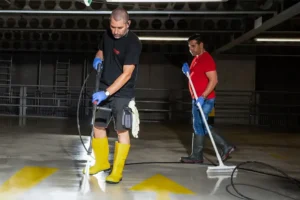Introduction
Most people use AI tools like ChatGPT to generate generic cover letters in seconds. But what if you could train AI to understand your unique voice, experiences, and career goals—so it writes cover letters that truly sound like you?
In this guide, you’ll learn how to “teach” AI about your background, tone, and preferences, so that every cover letter it generates feels personalized, relevant, and recruiter-ready.
Why Training AI Matters
AI doesn’t know you. It only knows what you give it.
So if you:
-
Paste a resume with no context
-
Skip tone instructions
-
Don’t share your achievements
You’ll get a letter that could’ve been written for anyone.
Training AI = providing better inputs so you get better, custom outputs—consistently.
Step 1: Define Your Personal Writing Style
Think about how you want your cover letters to sound:
-
Friendly and confident?
-
Formal and strategic?
-
Creative and enthusiastic?
Pick a tone you feel comfortable with and describe it clearly in every prompt.
Example tone instruction:
“Use a confident and conversational tone, like how I’d speak in a thoughtful interview.”
Step 2: Build a Career Snapshot to Reuse in Prompts
Write a brief summary of your:
-
Background
-
Key skills
-
Career goals
-
Industries of interest
-
Signature achievements (with metrics)
Example Snapshot:
I’m a marketing analyst with 3+ years of experience in B2B SaaS, specializing in content strategy, SEO, and conversion tracking. I’ve helped grow organic traffic by 120% YoY and launched 4 lead-gen campaigns with a 15% average CTR.
Save this as your “base bio” to reuse and adapt.
Step 3: Use Smart Prompts That Include Your Identity
Don’t just say “write me a cover letter.” Say this:
Write a personalized cover letter (max 300 words) for the role of [Job Title] at [Company Name].
Here’s who I am:
– [Paste your Career Snapshot]
Here’s the job description: [Paste JD]
Use a confident, friendly tone that reflects curiosity, professionalism, and impact.
Step 4: Save and Reuse High-Performing AI Outputs
Once AI gives you a cover letter that:
-
Feels like your tone
-
Highlights your best stories
-
Works well for your job type
Save it as a template base for future use. Replace only:
-
The company name
-
The job description
-
One paragraph related to the specific role
This saves hours while keeping your voice consistent.
Step 5: Give Feedback to Refine AI’s Output
AI improves when you tell it what’s wrong.
Example feedback:
-
“Make this more concise.”
-
“Use simpler language.”
-
“Add a reference to my project with [Company].”
-
“Sound less robotic and more personal.”
-
“Mention my leadership in cross-functional teams.”
AI can then revise the same draft until it sounds just right.
Example Before & After: AI With vs Without Training
Generic AI Output:
I am writing to express my interest in the Product Manager position at Apollo Corp. With experience in roadmap planning and stakeholder communication, I believe I am a strong fit.
Trained AI Output (with Career Snapshot + Tone):
Apollo Corp’s mission to reshape enterprise automation immediately grabbed me. I’ve spent the last 3 years launching user-facing features in a B2B SaaS space, collaborating across engineering, design, and data science to ship products that serve over 2M users. I’d love to bring that same energy to your growth team.
How to Train AI for Multiple Job Types Without Losing Focus
If you’re applying for different types of roles (e.g., Product Manager, Marketing Strategist, UX Designer), your AI prompt and career snapshot need to shift accordingly. Here’s how to train AI to handle role-specific variations without rewriting from scratch:
-
Create multiple snapshots: One for each job type you’re targeting.
Example:-
Product roles: Emphasize strategy, cross-functional leadership, roadmap execution
-
Marketing roles: Emphasize content performance, growth metrics, SEO strategy
-
UX roles: Highlight design systems, research insights, user behavior
-
-
Adjust your prompt slightly based on the role.
“Use a product-minded tone focused on collaboration, impact, and user empathy.”
“Use a data-driven tone showing campaign outcomes and analytical thinking.” -
Save separate template letters that work well for each category.
By doing this, your cover letters always sound like you—but they speak directly to what each hiring manager is looking for.
How to Use AI to Analyze Job Descriptions for Better Matching
Training AI isn’t just about your inputs—it’s also about understanding the job.
Use AI to extract key patterns and help tailor your cover letter accordingly:
Prompt:
“Analyze the following job description. What are the top 3 skills or themes the recruiter cares about most? How can I match my experience to them?”
This gives you:
-
Keywords to weave into your letter
-
A clearer focus for your body paragraphs
-
Alignment with ATS systems
You can even follow up with:
“Now write a paragraph that aligns my experience with those three themes.”
This small tweak boosts relevance without increasing effort.
How to Measure Success and Improve Over Time
Treat your cover letter system like a product: test, learn, iterate.
Track your applications in a simple spreadsheet with columns like:
-
Job title
-
Company
-
Custom paragraph used
-
Response received (Y/N)
-
Interview status
-
Notes on what may have worked
Then ask AI for help:
“Here are 5 cover letters I’ve used. Only 2 got replies. What do those two have in common?”
You’ll start to see patterns in tone, structure, or storytelling. Refine based on results—and your AI assistant becomes smarter with you.
How to Store and Organize Your AI Assets
As you build your personalized AI workflow, organization becomes key. Use folders or documents to store:
-
Your updated Career Snapshot
-
Sample prompts by job type
-
Final drafts for each company
-
Feedback history from mentors or AI revisions
-
Notes on tone that worked best
Keeping everything in one place lets you iterate quickly, apply faster, and stay consistent with your voice.
Pro Tip: Create a Notion or Google Docs hub titled: “AI Cover Letter Toolkit”
How to Scale Your Workflow Without Losing Personality
You can apply to 10–15 jobs a week without sacrificing personalization by following this mini-system:
-
Use a saved “base letter” that already sounds like you
-
Customize the intro and 1 mid-paragraph for each company
-
Ask AI:
“Adapt this letter for [Company] based on this job description”
-
Review, insert 1 company-specific detail, and send
With this approach, you’re not writing from scratch—but you’re also not spamming.
Final Thoughts
The real magic of AI cover letters isn’t speed—it’s customization at scale.
When you train AI with your:
-
Voice
-
Background
-
Goals
You move from sending AI cover letters that work to sending letters that win.
Make the machine your partner—not your replacement.



